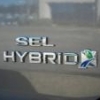Search the Community
Showing results for tags 'ACTIVE NOISE CANCELLATION'.
-
TSB 14-0151POWERTRAIN DRONING NOISE - ACTIVE NOISE CANCELLATION (ANC) Publication Date: August 18, 2014 FORD: 2013-2014 C-MAX ISSUE: Some 2013-2014 C-MAX Hybrid and C-MAX Energi vehicles may exhibit a loud, low frequency, droning powertrain type noise when the engine is running. The noise can be intermittent and may be heard mostly at specific speeds, RPM ranges, and vehicle loads, such as while driving up a hill or grade. The vehicle is equipped with ANC that uses the vehicle’s sound system to cancel out specific low frequency powertrain noises. ACTION: Follow the Service Procedure steps to correct the condition. SERVICE PROCEDURE Have any aftermarket modifications been made to the audio system, speakers, headliner or has a non-factory roof opening panel been installed? Yes - this procedure does not apply. Any alteration of these components or the vehicle structure affects ANC system performance. Returning the vehicle to the original configuration is recommended. No - proceed to Step 2. Perform the audio control module (ACM) self-test to complete the speaker walk around test. Refer to Workshop Manual (WSM), Section 415-00.Did speaker walk around test successfully complete? Yes - proceed to Step 4. No - this procedure does not apply. Refer to WSM, Section 415-00 for normal diagnosis. Lower headliner only enough to access the ANC system microphones; being mindful not to disconnect the microphones. Refer to WSM, Sections 501-05 and 415-00.Verify ANC microphone harness routings are correct. Disconnect the driver side front microphone. Perform an IDS on-demand self-test on the digital audio control module C (DACMC). Did diagnostic trouble code (DTC) B116A-01 set in the DACMC? Yes - clear the DTC and reconnect the microphone. Proceed to Step 6. No - note which DTC set and proceed to Step 6. Disconnect the passenger side front microphone. Perform an IDS on-demand self-test on the DACMC. Did DTC B117A-01 set in the DACMC? Yes - clear the DTC and reconnect the microphone. Proceed to Step 7. No - note which DTC set and proceed to Step 7. Disconnect the rear passenger microphone. Perform an IDS on-demand self-test on the DACMC. Did DTC B13F5-01 set in the DACMC? Yes - clear the DTC and reconnect the microphone. Proceed to Step 8. No - disconnect the wire harness from the microphone and reposition the wire harness to connect the harness to the correct microphone, so the fault codes match the microphone position. Clear the DTC. Proceed to Step 8. Fully seal each microphone bezel to the headliner using 3M™ Super-Fast Adhesive. (Figure 1) Figure 1 - 14-0151 Reposition headliner. Refer to WSM, Section 501-05.
- 19 replies
-
- TSB 14-0151
- TSB
-
(and 3 more)
Tagged with:


